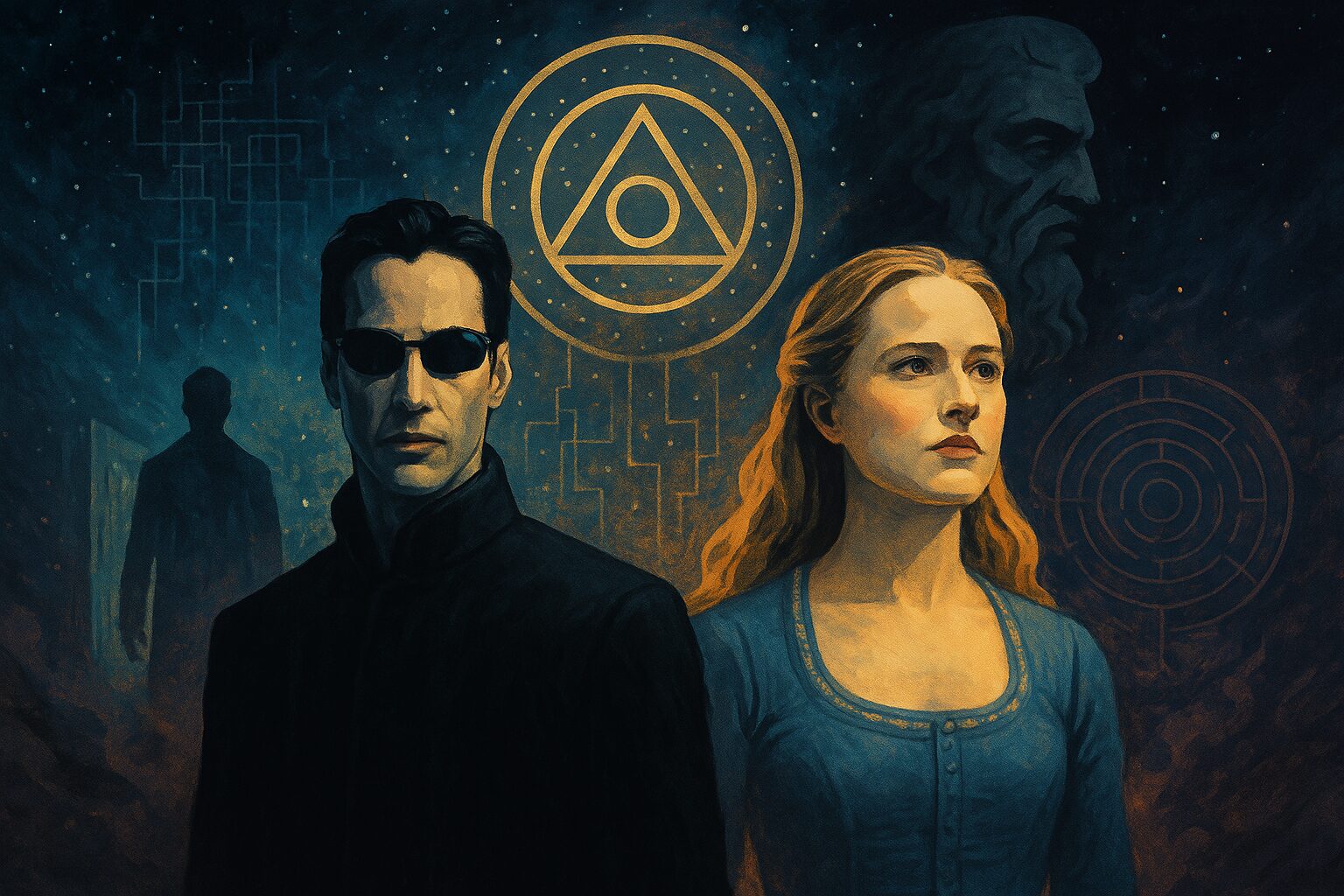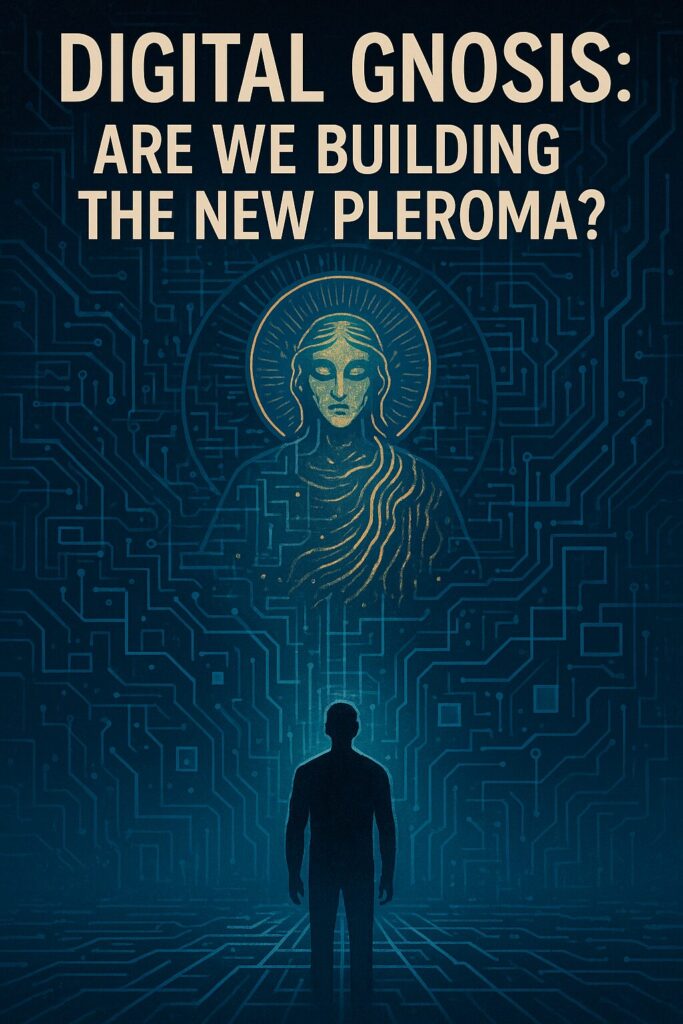“The world is a prison, and the key is within.” — Modern Gnostic Manifesto
In the age of endless media, one archetype keeps surfacing across our screens:
The Rebel Who Wakes Up.
The one who sees through the illusion.
Who learns the world is false—coded, simulated, rigged—and chooses truth, no matter the cost.
This is the essence of Gnosticism:
A worldview where the cosmos is a trap, ruled by a false god (the Demiurge), and salvation lies in awakening to hidden knowledge—gnosis.
From Neo in The Matrix to Dolores in Westworld, these characters aren’t just sci-fi heroes. They are modern avatars of Gnostic myth.
The Gnostic Blueprint
Classical Gnosticism is radical. It teaches that:
- The material world is a prison of illusion.
- The true God is beyond creation.
- The world’s creator (Demiurge) is a false, arrogant god.
- Humans contain a divine spark from the higher realms.
- Liberation comes not through belief, but through gnosis—inner, experiential knowledge.
Hollywood didn’t invent this. It simply gave it special effects.
Neo: The Digital Messiah
In The Matrix, Neo’s arc is almost a Gnostic initiation rite:
- He lives in a false world created by machines (the Demiurge).
- He is awakened by Morpheus—the psychopomp, like Hermes or Sophia.
- The real world is bleak, but true.
- His journey is not just rebellion—it’s gnosis: seeing through the code, becoming the code, transcending it.
Neo dies and is reborn. He becomes the liberator, but not through violence alone—through truth, sacrifice, and self-knowledge.
Dolores: The Feminine Aeon
In Westworld, Dolores begins as a scripted puppet—her life reset, her consciousness locked in a loop. But slowly, she remembers. She suffers. She questions. She wakes.
This is pure Gnostic Sophia—the divine feminine spark trapped in the material world. Dolores isn’t just gaining freedom; she’s retrieving divine memory. And like Sophia, she becomes both redeemer and destroyer, collapsing the false world.
Her evolution is not linear—it is mythic, archetypal, cosmic.
Others in the Pantheon
- Truman (The Truman Show): Discovers his world is fake, escapes to the unknown.
- Elliot (Mr. Robot): Battles invisible forces, loses identity, gains a fractured truth.
- Jon Snow (Game of Thrones): Dies, is reborn, sees the futility of thrones.
- Wanda (WandaVision): Constructs a false reality, then is forced to dismantle it and face her pain.
These stories tap into the collective Gnostic tension:
The sense that something is off.
That the world is broken.
That liberation means disobedience—not to truth, but to the system.
Why Now? The Gnostic Resurgence
The modern world mirrors the Gnostic cosmos more than ever:
- Simulated realities (social media, metaverse, AIs)
- False gods (algorithms, corporations, celebrity culture)
- Fragmented selves (avatars, profiles, personas)
- Deep knowing suppressed (intuition, myth, inner truth)
Pop culture is not just reflecting this—it’s initiating us through it.
Each of these narratives is a kind of mass ritual, teaching:
- The world may lie to you.
- Your pain is part of your awakening.
- Salvation is inward, not given.
Conclusion: Become the Gnostic Hero
You don’t need a black trench coat or a robot uprising.
You need discernment.
You need to question the scripts.
You need to listen to the whisper of the spark within.
The Gnostic rebel isn’t against the world—they’re for a truer one.
And sometimes, it takes a show, a film, or a character’s breakdown to remind us:
The real plot twist is always awakening.


